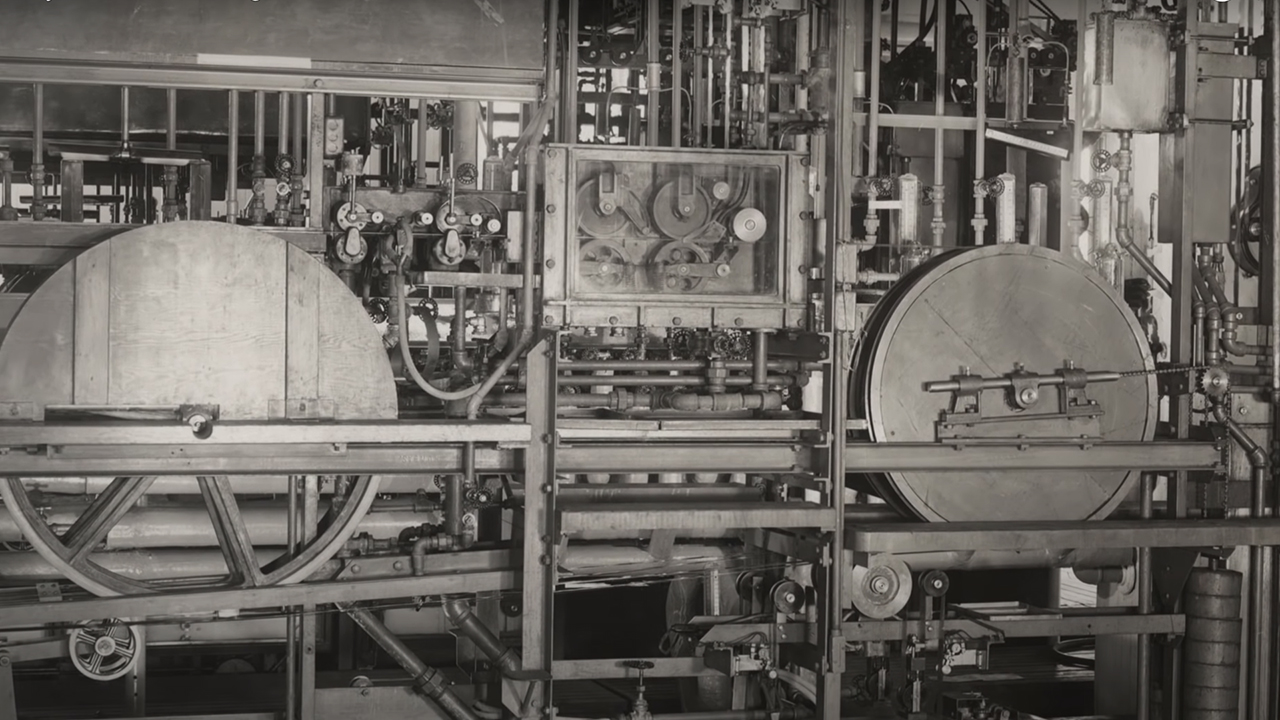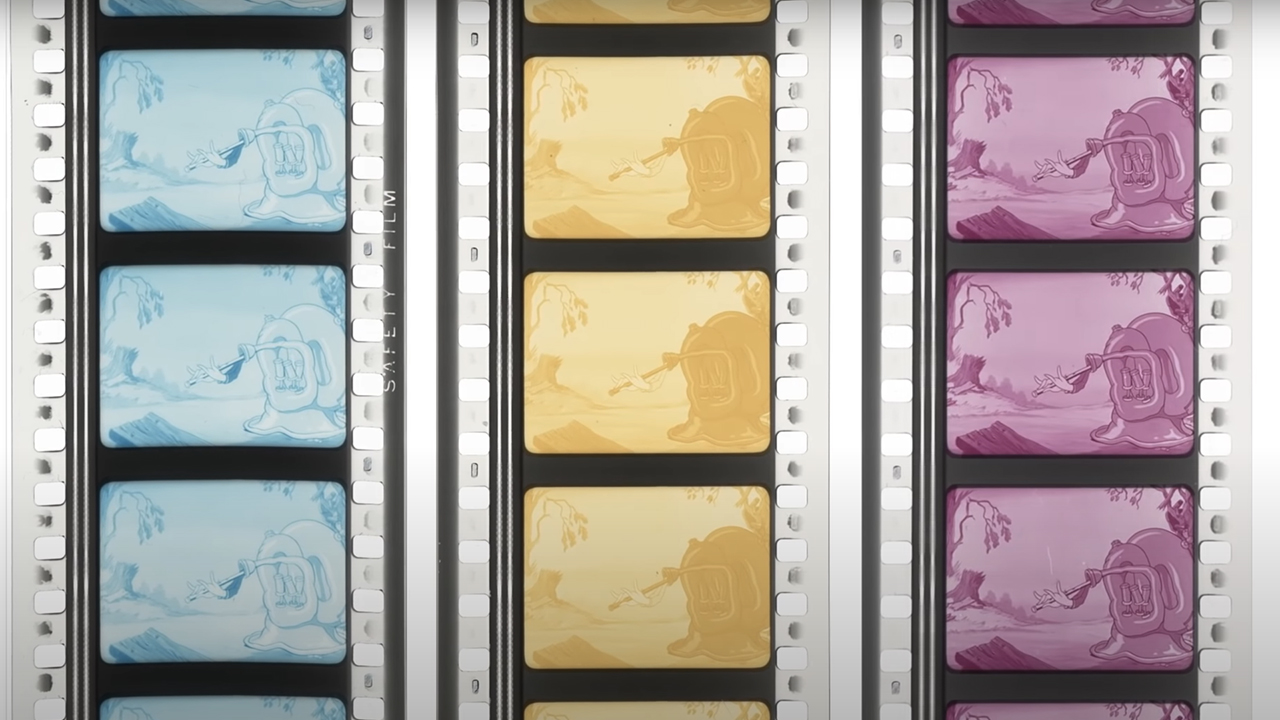Κινηματογράφηση - Filming - shooting techniques - τεχνικές εικονοληψίας
- Thread starter yiannakas
- Start date
You are using an out of date browser. It may not display this or other websites correctly.
You should upgrade or use an alternative browser.
You should upgrade or use an alternative browser.
Kosh
Μέλος Σωματείου
Kosh
Μέλος Σωματείου
Kosh
Μέλος Σωματείου
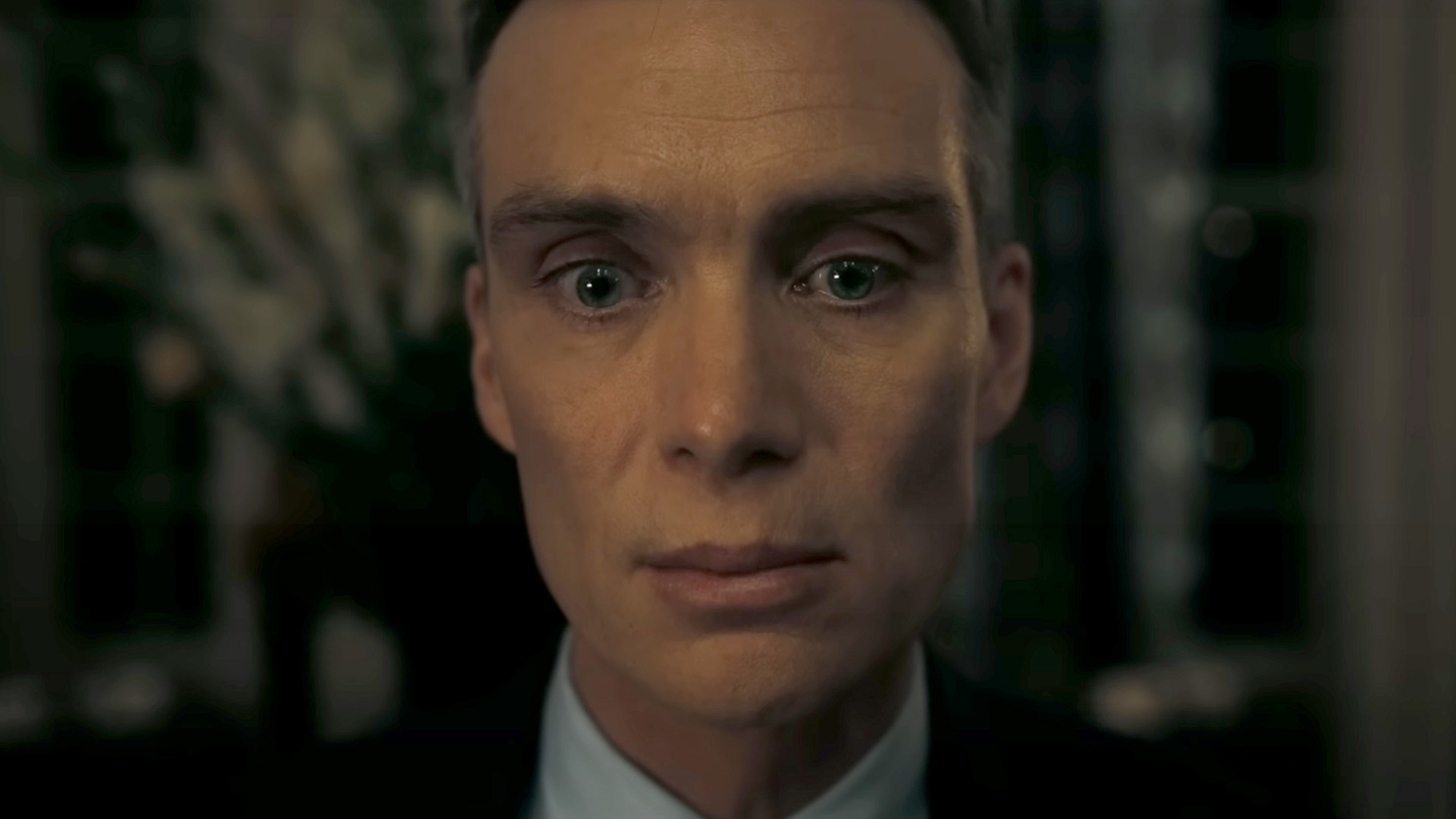
The Power of Focus in Film – Tips for Sharpening Your Storytelling Skills | CineD
Everyone knows how to set the focus in film, but have you considered its incredible storytelling potential? Let's talk about it!
Kosh
Μέλος Σωματείου
Kosh
Μέλος Σωματείου
Kosh
Μέλος Σωματείου
How to draw A-grade storyboards (even if you can't draw!) | Media studies tutorial
The Media InsiderKosh
Μέλος Σωματείου
Kosh
Μέλος Σωματείου
The Technicolor Look and Its Journey – How this Technology Has Inspired Films to This Day
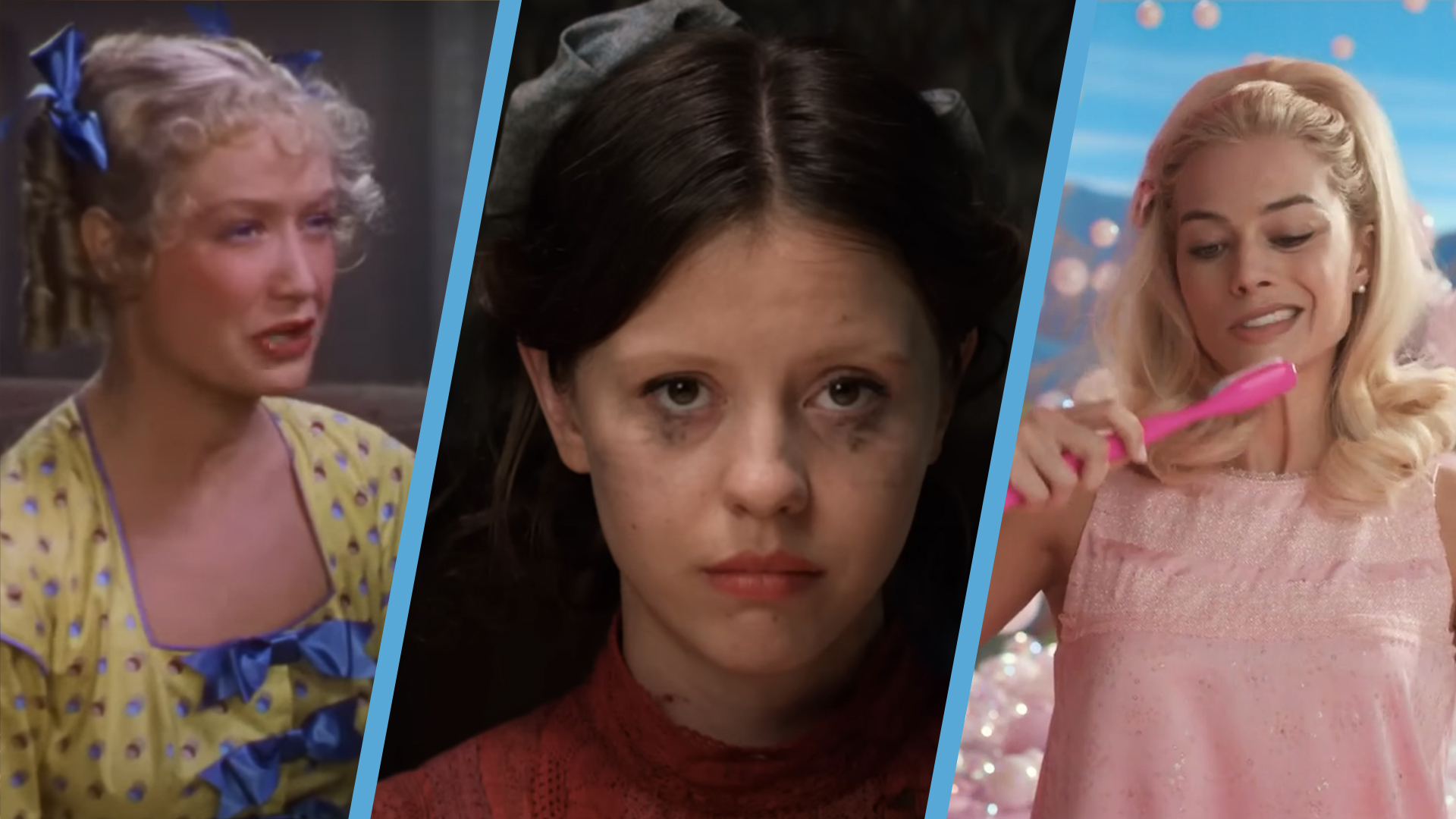
The Technicolor Look and Its Journey – How this Technology Has Inspired Films to This Day
Our world is full of color, and so are most contemporary movies. Yet, it hasn’t always been this way. If you’re interested in film history, then you were pr
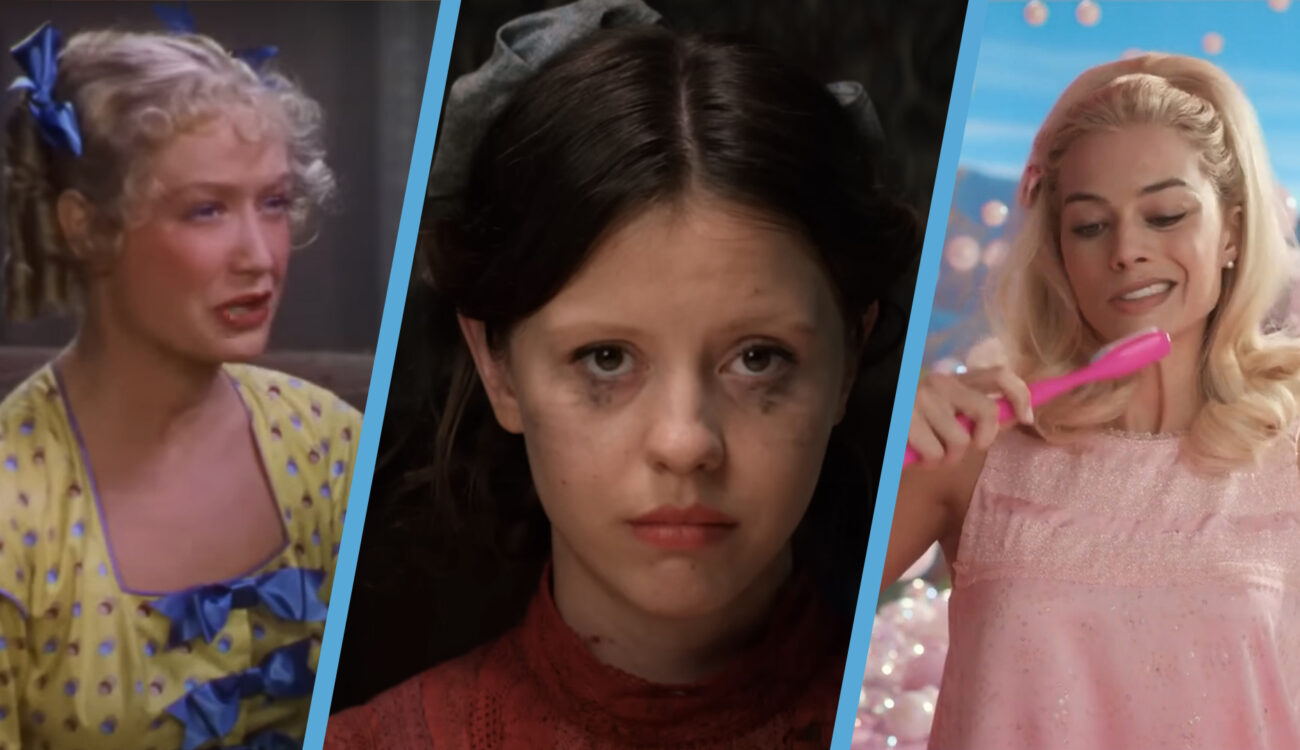
Our world is full of color, and so are most contemporary movies. Yet, it hasn’t always been this way. If you’re interested in film history, then you were probably as curious about the Technicolor era as I was. Even if you’re not, this term seems to pop up more and more lately. Believe it or not, two of this year’s Oscar nominees emulated lush, bright, and vibrant visuals from the past. But why? In this article, we explain what the Technicolor look means, and how this groundbreaking technology worked. Also, we explore some modern films inspired by this aesthetic, and why they used it.
MZed Pro 1-Year Filmmaking Education
Is Technicolor simply back in fashion like everything else in our history that goes in loops? I don’t believe so. We’ve seen movies replicating this distinct visual atmosphere now and then throughout the decades. Crafting the cinematic world so bold, saturated, and vivid that it’s almost surreal is a powerful tool. Not only can it be joyful to watch, but also special colors indeed may serve storytelling needs. Let’s talk below about emulating a Technicolor look in digital cinematography.
What is a Technicolor look?
Technicolor (which is still a trademark) is a company that was founded in 1914 by three gentlemen: Herbert T. Kalmus, Daniel Comstock, and Burton Wescott (“Tech” in the name refers to MIT, where Kalmus and Comstock originally met). Their goal was to achieve full-spectrum color photography for motion pictures, and so they did. It’s important to mention that Technicolor wasn’t the first color process in film history (it came after Britain’s Kinemacolor), but due to its quality, beautiful results, and very special technology, it quickly became the most widely used one. So popular in fact, that the Golden Age of Hollywood is literally marked by Technicolor, and over the years, it became a household name.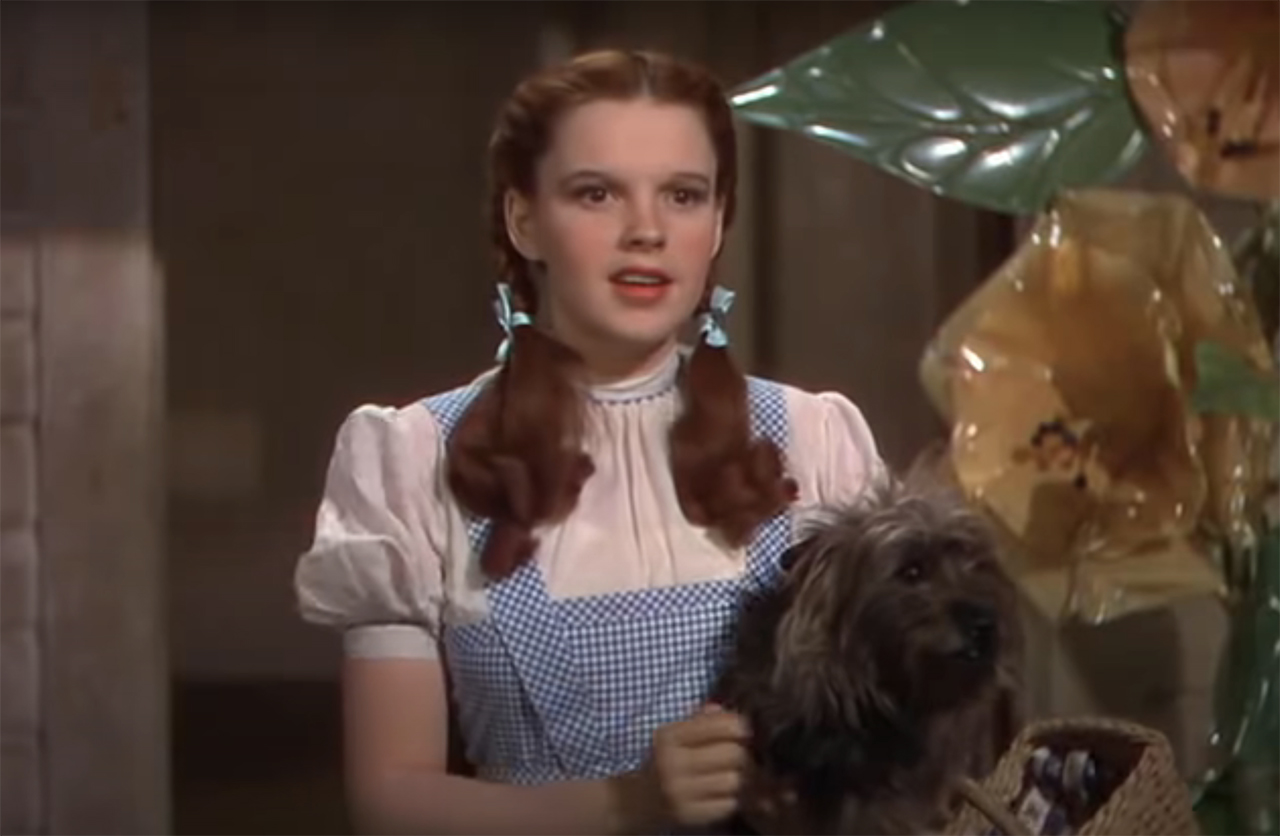
Dorothy in the Technicolor world. A film still from “The Wizard of Oz” by Victor Fleming, 1939
When we talk about Technicolor today, we usually mean it as an adjective for bright, saturated movies from the 1930s to 1950s. To achieve such incredible results, the company developed a series of processes that use dye-transfer techniques to produce color prints. The most famous one was Process 4, or the so-called “Three-strip Technicolor”, which used a completely novel system (including a special enormous camera) and made coloring accessible to Hollywood. The biggest advantage was you didn’t need any additional complicated equipment for the cinema projection of the movies.
Related Course
A brief history of Technicolor
The founders and experimenters of Technicolor started by merging red and green colors. For that, they put a prism beam-splitter behind the camera lens. What it did was expose two consecutive frames of a single strip of black-and-white negative simultaneously. One went behind the red filter, another one behind a green. This process meant that filmmakers had to capture and project everything at twice the normal speed and needed a special projector to properly register the two color images on screen. It wasn’t very convenient, and often the results were far from the ones intended. While this process transferred skin tones reasonably well, it didn’t include the color blue at all.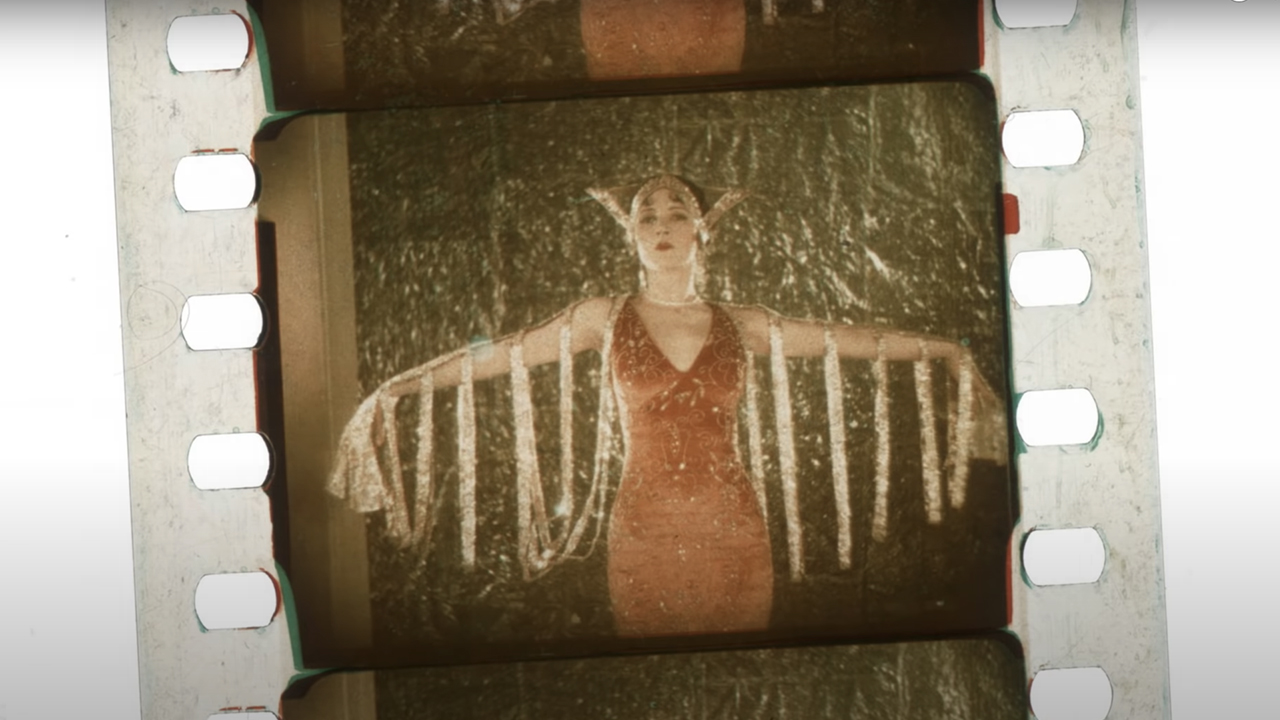 The two-color process visualized. Image source: George Eastman Museum (from their YouTube channel)
The two-color process visualized. Image source: George Eastman Museum (from their YouTube channel)Blue came into the mix only in 1932, when Technicolor tweaked the technology and developed their famous Process 4. (We will talk about this extraordinary three-strip workflow in a moment). At first, they showed the results only in cartoons. In particular, Walt Disney gathered the courage to make a bold move using three-strip Technicolor in the short, “Flowers and Trees”. As it turned out, it was the right decision, as the unusual color boost helped the previously unsuccessful “Silly Symphonies” series to launch and Disney won an Oscar for that.
The first fully Technicolor live-action feature was “Becky Sharp”, and after that, the groundbreaking coloring process became an industry standard. More than half of Hollywood films until the mid-50s used this then-novel technology. You can see the full list of three-strip Technicolor works here.
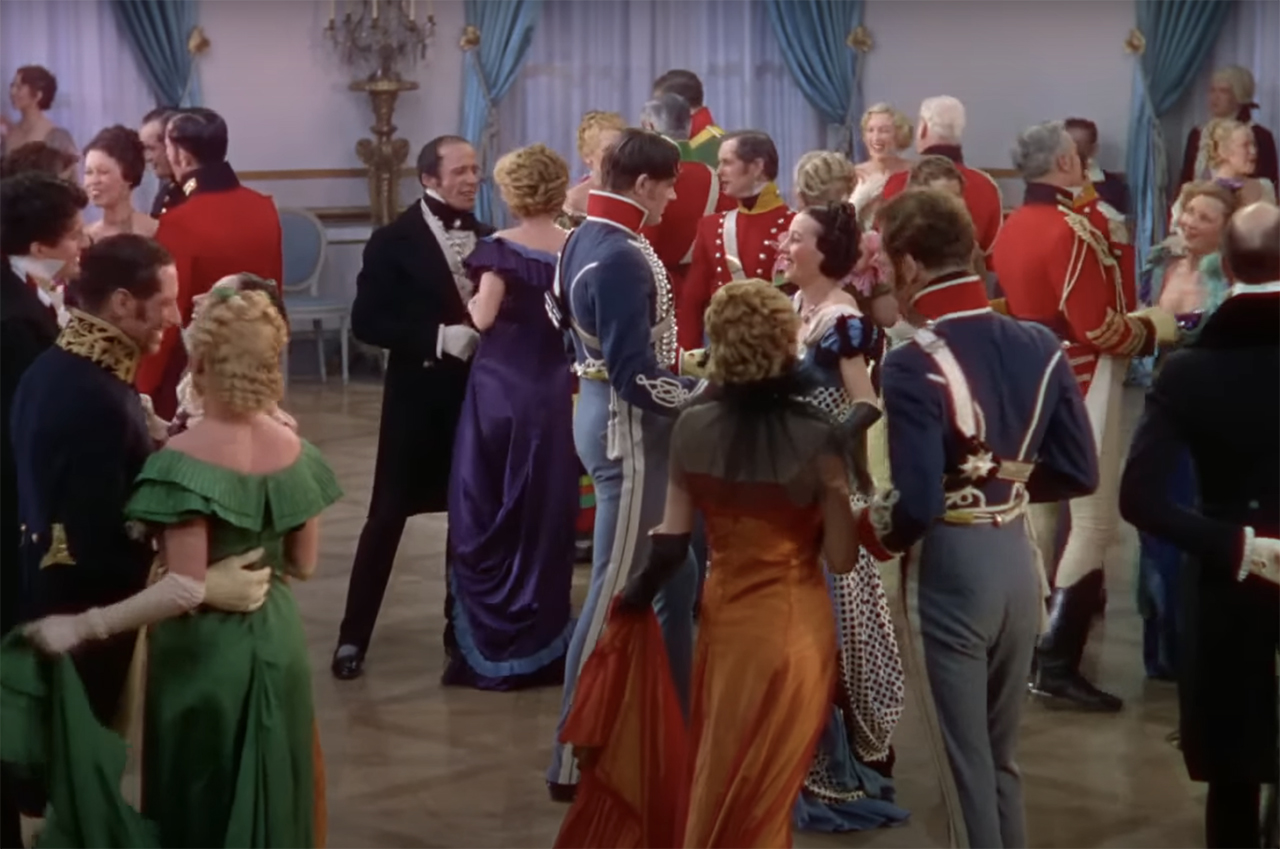 A film still from “Becky Sharp” by Rouben Mamoulian, 1935
A film still from “Becky Sharp” by Rouben Mamoulian, 1935Unfortunately, shooting Technicolor involved a special and very expensive photographic system, as well as a complicated dying process. Of course, this annoyed studios and filmmakers. So, when other – simpler and cheaper – coloring workflows emerged (such as Eastman Color, which used a single strip), they quickly took over the industry. Technicolor took a few last breaths, trying to adjust, and eventually died. “The Godfather Part II” is recognized among the final major films using this technology.
Three-strip Technicolor and how it worked
So, what was so special about the three-strip Technicolor? First, it used a custom-designed camera that operated with three black-and-white film strips simultaneously. An optical cube inside splits the light beam into three parts: favoring and recording either the red, blue, or green spectrum of light accordingly.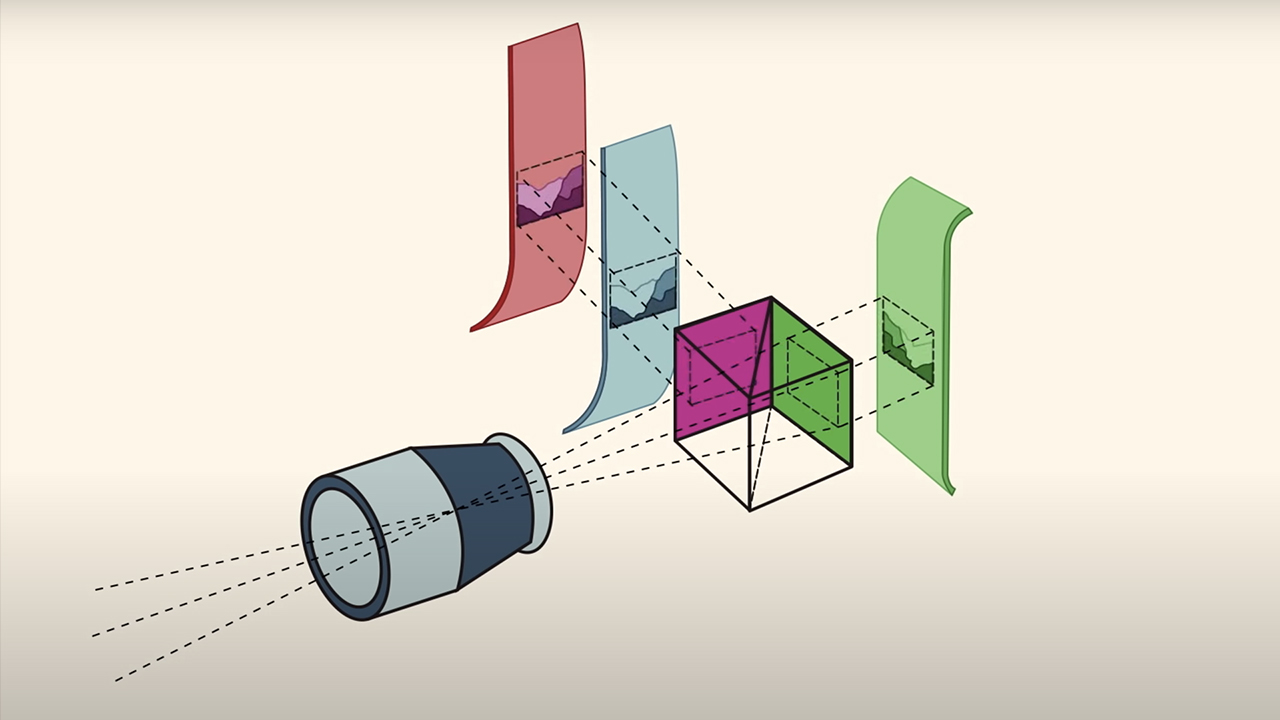 Image source: George Eastman Museum (from their YouTube channel)
Image source: George Eastman Museum (from their YouTube channel)The three strips were developed separately and were then flipped into positive matrixes. Each print was treated with the appropriate dyes corresponding to complementary colors (cyan for red matrix, magenta for green, and yellow for blue). These multiple color records had to be printed one by one onto a blank piece of film. Together, they created a gorgeous Technicolor image. As it lacked contrast, the company would add a black and white layer underneath the matrixes to serve as “the key” and add crispness to the images.
Difficulties associated with Technicolor
As the Technicolor camera had to run three strips of film simultaneously, it was bulky and extremely loud. To deal with it, filmmakers required a special large-volume sound blimp, which made the whole system weigh around 500 pounds (more than 200 kilograms).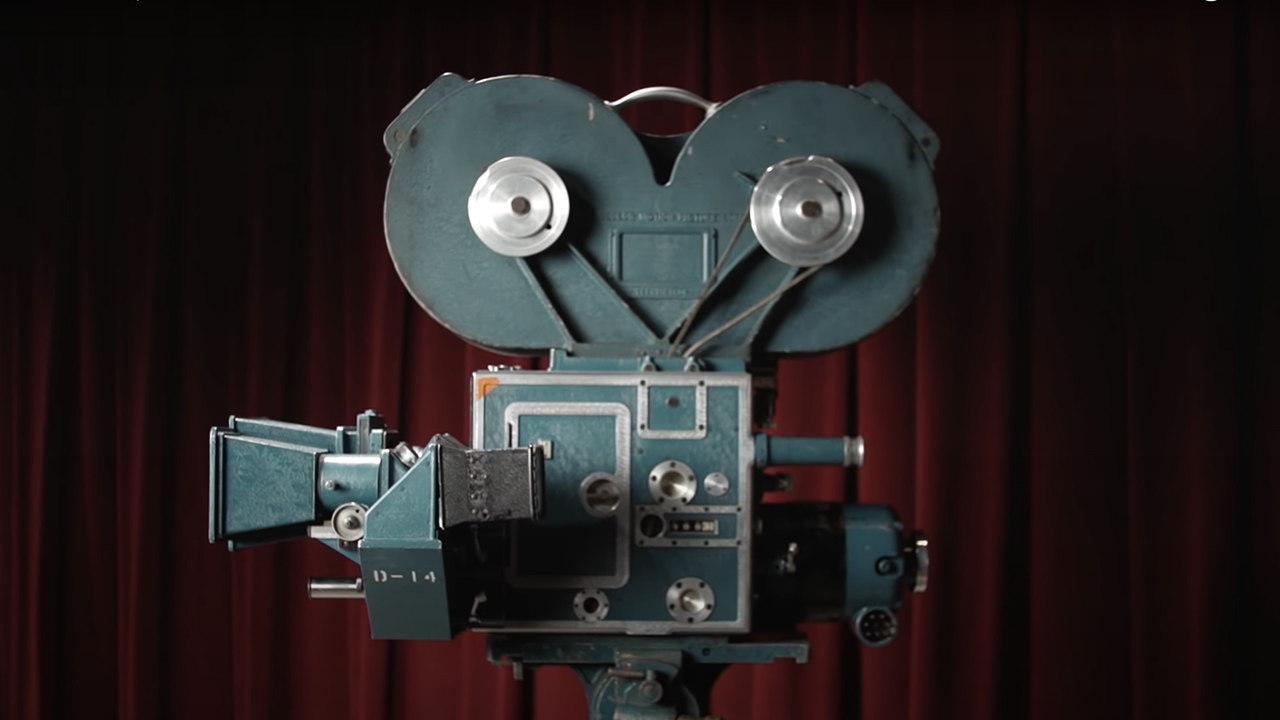
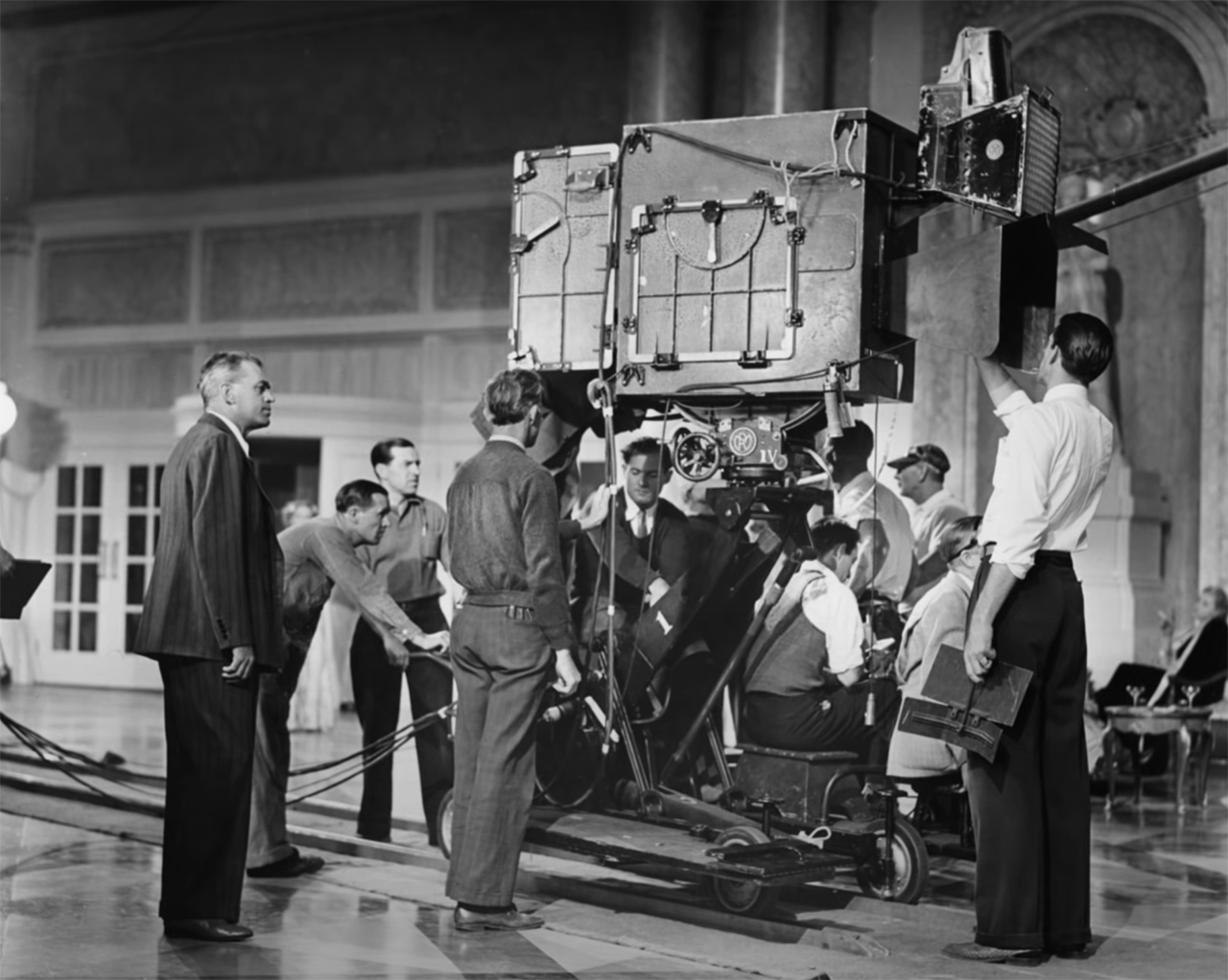
Wow, look at that monstrous contraption! No wonder film studios couldn’t buy Technicolor cameras – they had to rent them together with a special supporting crew. Additionally, the company always sent a “color supervisor”, who ensured that sets, costumes, and makeup didn’t push beyond the limitations of the system. Oftentimes, the supervisor had more to say than the directors themselves.
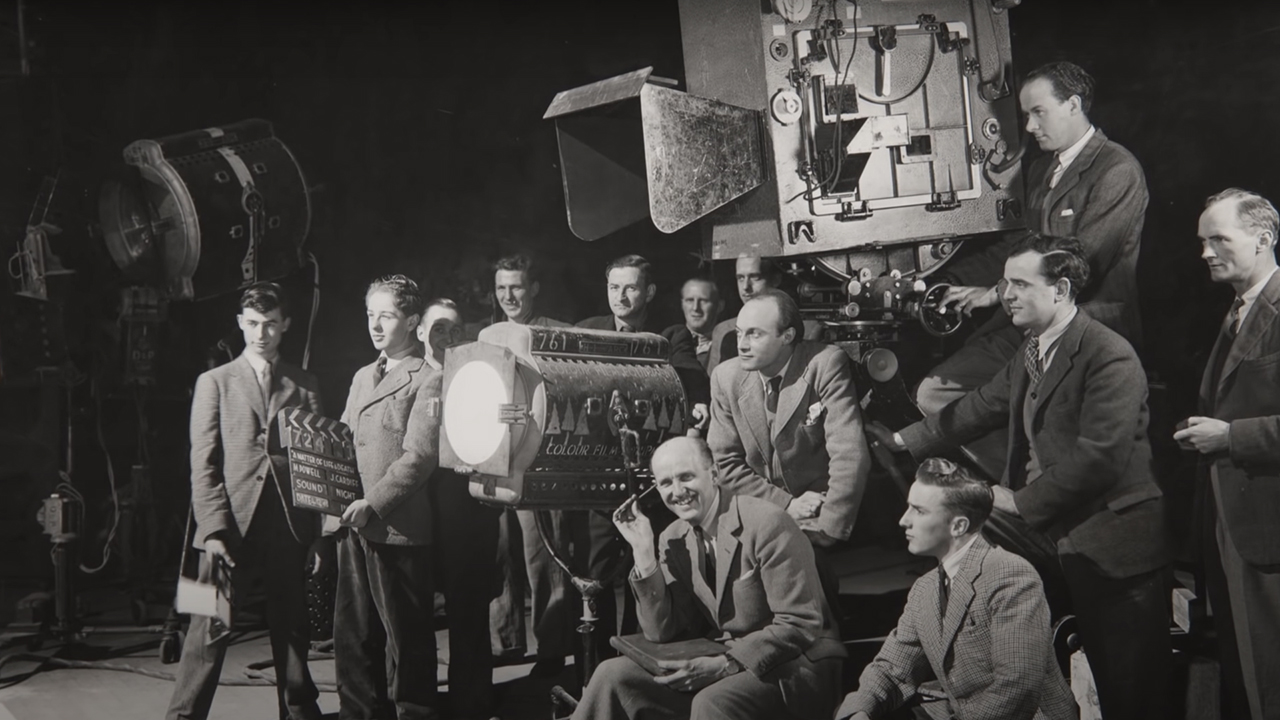 Image source: George Eastman Museum (from their YouTube channel)
Image source: George Eastman Museum (from their YouTube channel)As if it was not already complicated enough, the correct processing of the three film strips also required a lot of light while filming. That’s why sometimes sets were completely overlit, which warmed them up to 100 degrees Fahrenheit (or around 38 degrees Celsius). Imagine working in such conditions! Truly, beauty knows no pain.
The effect that the Technicolor look provides
No matter what, Hollywood fell in love with the Technicolor look, and let’s be honest: we’re still mesmerized by it. For instance, when Judy Garland’s Dorothy from the “The Wizard of Oz” leaves sepia-colored Kansas, and enters the Technicolor land of Oz, it’s a breathtaking moment. Let’s rewatch this scene together:In my opinion, it’s also one of the best examples of how color can enhance storytelling. It wasn’t only a crazy experience for the audience of that era, accustomed to monochrome films. As the Technicolor look creates exaggerated, lively, and even unreal visuals, we perceive them as a separate world that waits for Dorothy on the other side of the door. Diving into it is almost a sensual experience.
Technicolor consultants at that time also helped productions develop a color scheme to support the narrative. They often referred to conventional associations: red for passion, danger, and heat; green for freedom, nature, freshness; and so on. Of course, nowadays we can call such statements cliché. However, consider this: color perception studies do state that we have different physical reactions to various waves of light. Seasoned colorist Ollie Kenchington dedicates a module to it in his MZed course “Directing Color”. He explains, for example, why blue is almost like white noise to our eyes, and how red elevates the heart rate and blood pressure. These are insights to think about when defining your movie’s color palette.
Modern movies, inspired by Technicolor look
Coming back to Technicolor, the technology is now considered obsolete, and the equipment designed for it was uninstalled years ago. However, its lush and bold look keeps inspiring filmmakers after all this time. For instance, in Martin Scorsese’s latest epic Western drama “Killers of the Flower Moon”, filmmakers use a variety of color LUTs, including Technicolor. Cinematographer Rodrigo Prieto (who also received his Oscar nomination for this film) explains that the story’s epilogue is set in the 30s. To stay true to this epoch, they decided to go for the most popular technology at that time and emulated it. They also tested three-strip Technicolor in an earlier shot when Mollie’s mother dies and meets her ancestors. The contrast to the autochrome movie world worked so powerfully they decided to keep it this way. It also made this moment in the story feel slightly artificial and special.Meeting the ancestors. Film stills from “Killers of the Flower Moon” by Martin Scorsese, 2023
That’s not the first Technicolor moment in the Scorsese filmography though. In the biopic “The Aviator”, the director went for two vintage color processes that reflect the protagonist’s emotional evolution. While the story revolves around Hughes’s early career (played by Leonardo DiCaprio), we watch it in Technicolor’s two-color look. However, as the character sets a speed record in flying and goes to Connecticut, the movie transitions into the vibrant, three-strip aesthetic, which is associated with glorious years in cinema history.
At the same time, Rodrigo Prieto took his experience with emulating Technicolor to Greta Gerwig’s “Barbie”. Based on the old technology, they developed a special LUT (that they jokingly called “Technobarbie”) for the film‘s lush and vibrant artificial world of plastic dolls. To me, it felt almost like an homage to the fantastic experience of Dorothy, who also goes on a journey of self-discovery.
If you want to learn more about the cinematography and colors of “Barbie”, we wrote about it here. Also, make sure to listen to the ASC clubhouse conversation with Rodrigo Prieto on MZed.com, as it will give you more insight into the development of two distinct cinematic worlds in this movie.
How do digital films emulate Technicolor look?
Okay, but if the Technicolor technology is obsolete, how do we replicate the look in modern movies? The colorists of “The Aviator” explain that they found a process that mimics three-strip Technicolor digitally. Put very simply, you create a red filter, a green filter, and a blue filter, and apply them in the VFX software of your choice.Using this as a reference, and after making a conversion chart that would recharacterize every pixel to create a desired palette, they produced a LUT. This saved enormous amounts of time, as with the LUT the instructions were built into a graphics-processing card and allowed each shot to be rendered quickly.This approach filters out the other colors from each one of those layers, just like the filters in the old three-strip taking cameras did, and then what you’re left with is a digital form of that Technicolor look.
Rob Legato, a quote from the interview with The ASC magazine
Another interesting insight comes from Ti West’s horror movie “Pearl”, which also used the Golden Age of Hollywood color aesthetics as inspiration. In one interview, the director explains that replicating the three-strip process is unique and you can do only so much in color correction. So, they decided to be very particular in front of the camera and made sure everything they photographed looked like Technicolor already. This approach involved a huge effort with the costumes, production design, and contrast ratio of the lighting. Well, being that mindful of color pays off for sure.

